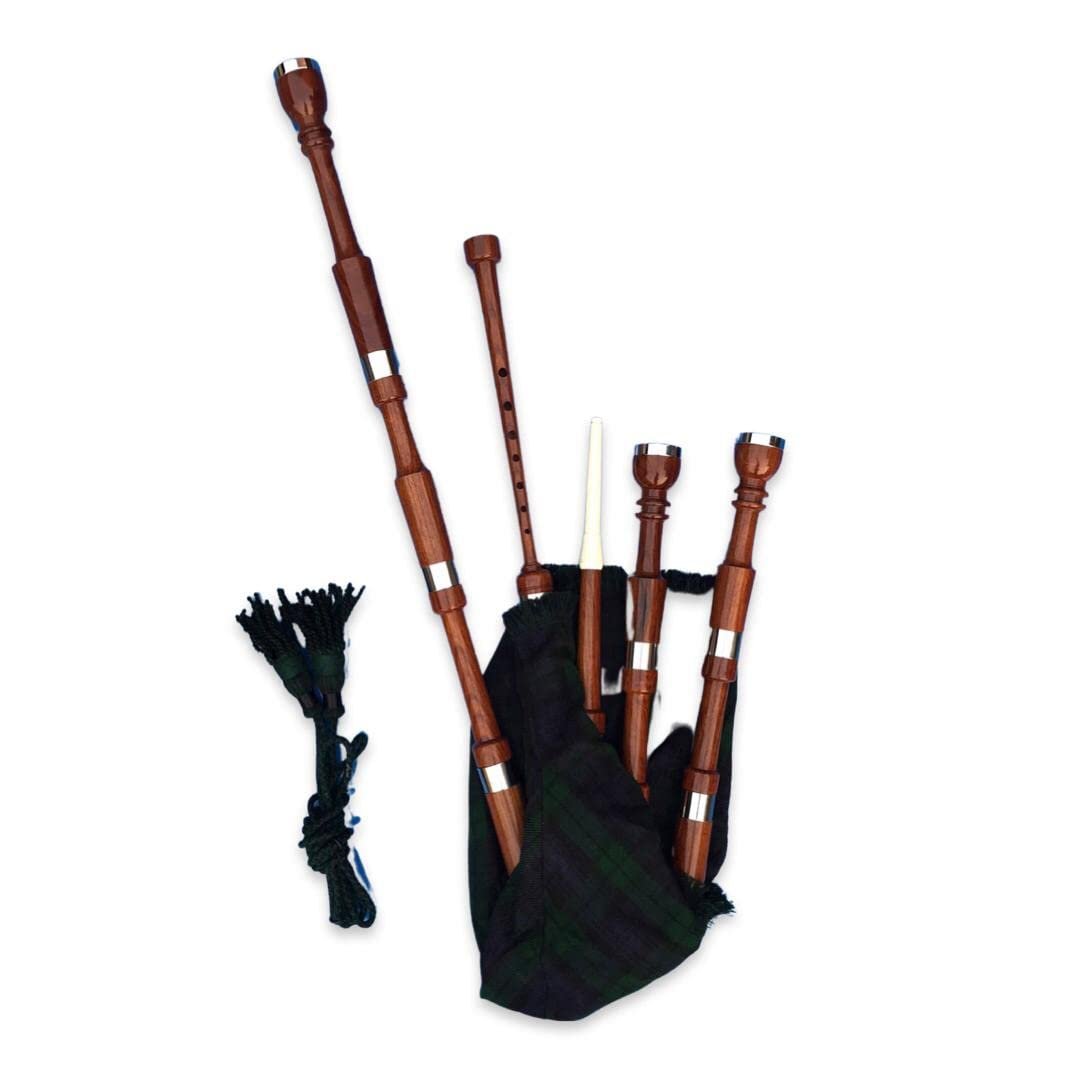The Resonant Fusion: Bagpiper Band Performance at The Calcutta Jain Shwetamber Sthanakwasi Gujarati Sangh Temple Kolkata
Introduction: A Symphony of Cultures in the Heart of Kolkata** Kolkata, often hailed as India’s cultural capital, is a city that thrives on its vibrant tapestry of traditions, arts, and diverse communities. It’s a place where ancient heritage seamlessly blends with modern dynamism, creating an atmosphere unlike any other. Imagine walking through its bustling streets, soaking in the sights and sounds, and then suddenly, you hear it – the distinct, soul-stirring skirl of bagpipes.
Now, picture this sound not on a parade ground or a Scottish highland, but echoing within the serene confines of a Jain temple. Sounds a bit unexpected, doesn’t it? That’s precisely the kind of captivating fusion we’re here to explore today.

### 1.1. Setting the Scene: Kolkata’s Cultural Tapestry Kolkata is a city that embraces diversity with open arms. From its grand colonial architecture to its bustling markets and tranquil spiritual havens, every corner tells a story. It’s a melting pot where different cultures, religions, and artistic expressions coexist, often in beautiful and surprising ways.
This inherent openness makes Kolkata the perfect backdrop for an event that might, at first glance, seem unconventional – a bagpiper band performing at a Jain temple. It’s a testament to the city’s spirit of inclusivity and its ability to find harmony in seemingly disparate elements.
### 1.2. The Unexpected Harmony: Bagpipes at a Jain Temple When you think of a Jain temple, you typically envision a place of profound peace, quiet contemplation, and spiritual devotion. The sounds associated with it are usually chants, prayers, or the gentle ringing of bells. So, the idea of a bagpiper band, with its powerful and often martial sound, performing in such a sacred space might raise an eyebrow or two.
However, this seemingly unusual combination is precisely what makes the event at The Calcutta Jain Shwetamber Sthanakwasi Gujarati Sangh Temple so fascinating. It’s a beautiful example of how music, a universal language, can transcend cultural and religious boundaries, creating a unique and memorable experience for everyone involved. It challenges our preconceived notions and invites us to witness a truly special moment of cultural exchange.
## **2. The Calcutta Jain Shwetamber Sthanakwasi Gujarati Sangh Temple: A Spiritual Oasis** Before we delve deeper into the captivating performance, let’s take a moment to understand the venue itself. The Calcutta Jain Shwetamber Sthanakwasi Gujarati Sangh Temple, located at 27 Pollock Street, Kolkata, is more than just a place of worship; it’s a vibrant community hub and a spiritual sanctuary for the Jain community in the city.
Jainism, an ancient Indian religion, emphasizes non-violence (Ahimsa) towards all living beings, self-control, and spiritual liberation. Its followers, known as Jains, live by principles that promote peace, compassion, and ethical conduct.
### 2.1. A Glimpse into Jainism: Principles and Practices Jainism, one of the oldest religions in the world, traces its origins to ancient India. Its core tenets revolve around the three jewels of Jainism: Right Faith (Samyak Darshana), Right Knowledge (Samyak Jnana), and Right Conduct (Samyak Charitra). Jains believe in the eternal nature of the soul and strive for spiritual purity through asceticism, self-discipline, and strict adherence to ethical principles.
The Sthanakwasi sect, to which this temple belongs, is a non-idolatrous branch of Jainism, meaning they do not worship idols or images of Tirthankaras (spiritual teachers). Instead, their worship focuses on meditation, prayer, and the study of scriptures. This emphasis on inner purity and spiritual discipline makes their places of worship, like the temple in Kolkata, centers of profound tranquility and introspection.
### 2.2. The Temple’s Historical Significance and Architecture The Calcutta Jain Shwetamber Sthanakwasi Gujarati Sangh has a rich history, serving the Gujarati Jain community in Kolkata for many years. While specific architectural details of this particular temple might not be as widely documented as some of the more ornate Jain temples, it undoubtedly embodies the simplicity and spiritual focus characteristic of the Sthanakwasi tradition.
These temples often serve as ‘Upashrayas’ – places where Jain monks and nuns reside during their travels, and where lay followers gather for religious discourses, prayers, and community activities.
#### 2.2.1. Architectural Marvels and Serene Ambiance While not always adorned with the intricate carvings found in some other Jain temples, the architecture of Sthanakwasi temples often reflects a quiet elegance and functionality.
They are designed to facilitate spiritual practices, with spacious halls for congregational prayers and meditation.
The ambiance within is typically serene, fostering an environment conducive to introspection and devotion. Imagine stepping inside, leaving the city’s hustle and bustle behind, and finding yourself in a space dedicated to peace and spiritual growth. It’s this very tranquility that makes the introduction of a vibrant, energetic bagpiper performance all the more intriguing.
#### 2.2.2. Community Hub and Spiritual Sanctuary Beyond its role as a place of worship, the temple functions as a vital community hub. It’s where members of the Gujarati Jain community come together for religious festivals, social gatherings, and educational programs.
It serves as a focal point for preserving their cultural heritage and passing on their traditions to younger generations. This dual role as a spiritual sanctuary and a community center highlights the temple’s importance in the lives of its devotees. It’s a place where faith is practiced, bonds are strengthened, and a sense of belonging is fostered.
## **3. The Allure of the Bagpipes: A Sound Beyond Borders** Now, let’s shift our focus to the star performers of this unique event: the bagpipes. These instruments, with their distinctive sound and commanding presence, evoke images of Scottish Highlands, military parades, and grand ceremonies. But their history and appeal stretch far beyond these traditional associations, reaching across continents and cultures.
What is it about the bagpipes that makes them so captivating, so capable of transcending their origins and finding a place in unexpected settings?
### 3.1. A Brief History of Bagpipes: From Ancient Origins to Modern Day The history of bagpipes is far more ancient and widespread than many realize. While often synonymous with Scotland, variations of the instrument have existed for thousands of years across different cultures, from the Middle East to Europe and even parts of Asia.
Early forms of bagpipes can be traced back to ancient Egypt and Greece, where simple reed pipes were combined with an air reservoir made from an animal skin. Over centuries, these instruments evolved, adapting to local musical traditions and available materials. The Great Highland Bagpipe, the most recognizable form today, developed in Scotland and became deeply intertwined with Scottish culture, particularly its military history and traditional music.
However, other forms, like the Irish Uilleann pipes, the Northumbrian smallpipes, and various European and Middle Eastern bagpipes, each possess their own unique characteristics and sounds. This rich and diverse history underscores the instrument’s enduring appeal and its ability to adapt and thrive in different cultural contexts.
### 3.2. The Unique Sound: Emotion and Resonance What makes the sound of the bagpipes so unique and impactful? It’s a combination of factors. The continuous drone, produced by one or more drone pipes, creates a rich, harmonic foundation.
The chanter, with its melodic capabilities, carries the tune. The sustained sound, unlike many other instruments, creates a powerful, almost hypnotic effect. It’s a sound that can be both mournful and triumphant, stirring deep emotions within the listener. For many, the bagpipes evoke a sense of tradition, heritage, and a certain raw, untamed beauty.
They demand attention, filling any space with their resonant tones. This inherent power and emotional depth make them incredibly versatile, capable of adding a unique flavor to any performance, even in a setting as unexpected as a Jain temple. It’s this resonance, this ability to touch something primal within us, that allows the bagpipes to bridge cultural gaps and create a truly memorable auditory experience.
## **4. The Performance: A Melodic Confluence** And so, the moment arrived. The air, usually filled with the gentle hum of devotion, was now charged with anticipation. The Bagpiper Band, resplendent in their traditional attire, prepared to unleash a sound that would reverberate through the temple grounds, creating a truly unforgettable experience.
This wasn’t just a musical performance; it was a dialogue between cultures, a harmonious blend of the familiar and the unexpected.
### 4.1. The Grand Entrance: Pipers Marching In Imagine the scene: the rhythmic beat of drums, followed by the unmistakable swell of the pipes. The pipers, with their kilts swaying and their instruments held high, marched in with a stately precision that commanded attention.
Their entrance itself was a spectacle, a visual and auditory announcement that something special was about to unfold. The sight of these musicians, often associated with distant lands and different traditions, stepping into the sacred space of a Jain temple, must have been a powerful moment for everyone present. It was a testament to the universal appeal of music and the willingness of both performers and audience to embrace a unique cultural exchange.
The energy they brought was palpable, transforming the atmosphere from serene contemplation to vibrant celebration.
### 4.2. Repertoire and Rendition: Traditional Tunes and Unexpected Adaptations What did they play? This is where the true artistry of the performance shone through. A skilled bagpiper band doesn’t just play; they interpret, they adapt, and they connect with their audience.
While traditional Scottish tunes undoubtedly formed the core of their repertoire, the magic often lies in the unexpected. Did they weave in Indian melodies, perhaps even devotional tunes, adapted for the pipes? This kind of musical fusion is where true innovation happens, creating a bridge between different musical traditions and appealing to a broader audience.
#### 4.2.1. Traditional Scottish and Indian Melodies One can only speculate on the exact setlist, but it’s highly probable that the band showcased a blend of classic Scottish pipe tunes – perhaps stirring marches, poignant laments, or lively reels.
These traditional pieces, with their rich history and emotional depth, would have provided a powerful introduction to the instrument’s capabilities. However, for a performance in a Jain temple in Kolkata, it would be truly remarkable if the band had also incorporated or adapted Indian melodies. Imagine the haunting beauty of a raga, or the rhythmic complexity of a folk tune, interpreted through the unique timbre of the bagpipes.
Such an endeavor would not only demonstrate the band’s versatility but also serve as a profound gesture of respect and cultural integration. It’s in these moments of creative adaptation that music truly transcends its origins and speaks to the heart of a diverse audience.
#### 4.2.2. The Energy and Atmosphere Created The sound of bagpipes is inherently powerful and evocative. It’s a sound that can fill vast spaces, stir emotions, and create an almost ceremonial atmosphere.
In the context of the temple, this energy would have been amplified. The vibrant, resonant tones would have enveloped the devotees and onlookers, creating a unique auditory experience. It wasn’t just about the notes being played; it was about the feeling, the atmosphere, the shared moment of experiencing something truly out of the ordinary.
The performance would have undoubtedly added a layer of grandeur and festivity, transforming a regular day at the temple into a memorable event. The sheer volume and sustained nature of the bagpipes would have ensured that every corner of the temple grounds, and perhaps even beyond, felt the impact of their melodic presence.
## **5. Cultural Significance and Community Engagement** The performance of a bagpiper band at The Calcutta Jain Shwetamber Sthanakwasi Gujarati Sangh Temple wasn’t just a musical event; it was a powerful statement about cultural exchange, understanding, and the unifying power of art. In a world often divided by differences, such moments serve as poignant reminders of our shared humanity and the beauty that emerges when diverse traditions come together.
### 5.1. Bridging Divides: Music as a Universal Language Music, in its purest form, transcends language, religion, and geographical boundaries. It speaks directly to the soul, evoking emotions and fostering connections that words often cannot.
The bagpiper performance at the Jain temple is a prime example of this universal appeal. Here, an instrument deeply rooted in Scottish and Celtic traditions found a receptive audience within a Jain spiritual setting. This unexpected juxtaposition created a unique dialogue, demonstrating how artistic expression can bridge seemingly disparate cultures.
It wasn’t about converting anyone or changing beliefs; it was about sharing, experiencing, and appreciating the richness of another culture through the medium of sound. This act of sharing, even for a brief period, can foster greater understanding and mutual respect among communities.
### 5.2. Reactions from Devotees and Onlookers One can only imagine the reactions of the devotees and onlookers. For many, it might have been their first encounter with the powerful sound of bagpipes in such a close and intimate setting.
There would have been initial curiosity, perhaps a touch of surprise, followed by fascination and appreciation. The sight of the band, the unique sound, and the sheer novelty of the event would have undoubtedly left a lasting impression. Children, in particular, would have been captivated by the spectacle, their eyes wide with wonder.
For the temple community, it was an opportunity to showcase their openness and willingness to embrace diverse forms of expression, while for the wider public, it was a chance to witness a beautiful moment of cultural synthesis in the heart of Kolkata. The atmosphere would have been one of shared joy and perhaps a quiet sense of awe at the unexpected beauty unfolding before them.
### 5.3. The Role of Such Performances in Modern Cultural Exchange In an increasingly interconnected world, events like these play a crucial role in promoting cultural exchange and understanding. They break down stereotypes, challenge preconceived notions, and encourage dialogue between different communities.
By bringing together elements from distinct cultural backgrounds, these performances create new narratives and experiences that enrich society as a whole. They demonstrate that tradition doesn’t have to be static; it can evolve and adapt, incorporating new influences while retaining its core essence.
Such collaborations foster a sense of global citizenship, reminding us that despite our differences, we are all part of a larger human family, capable of creating and appreciating beauty in its myriad forms. These events are not just about entertainment; they are about building bridges, fostering empathy, and celebrating the vibrant tapestry of human culture.
## **6. Organizing Such an Event: Logistics and Planning** Bringing together a traditional bagpiper band and a sacred Jain temple for a performance is no small feat. It requires meticulous planning, sensitive coordination, and a deep understanding of both the artistic and religious aspects involved. This section delves into the behind-the-scenes efforts that make such a unique event possible.
### 6.1. Coordination Between Temple Authorities and Performers The success of an event like this hinges on seamless coordination between the temple authorities and the bagpiper band. This would involve initial discussions to ascertain the feasibility and appropriateness of the performance within the temple premises. Key considerations would include the nature of the event (religious ceremony, cultural program, or a special celebration), the duration of the performance, and the specific areas within the temple where the band would perform.
Communication would be paramount to ensure that both parties are aligned on expectations and logistics. The temple authorities would need to understand the band’s requirements regarding space, sound, and movement, while the band would need to be fully briefed on the temple’s customs, rules, and the sanctity of the environment. This collaborative spirit is what transforms a mere idea into a beautiful reality.
### 6.2. Ensuring Respect for Religious Sensitivities Perhaps the most crucial aspect of organizing such an event is ensuring utmost respect for the religious sensitivities of the Jain community. Jainism, as we discussed, is founded on principles of non-violence and reverence for all life. Therefore, any performance within a Jain temple must align with these core values. This would involve careful consideration of the band’s attire, ensuring it is modest and respectful.
The volume and type of music would also be important; while bagpipes are loud, their use would need to be managed to avoid disturbing ongoing prayers or meditation. The timing of the performance would also be critical, avoiding periods of intense religious activity. It’s likely that the band would have been briefed on appropriate conduct within the temple, such as removing footwear and maintaining a respectful demeanor.
This thoughtful approach ensures that the performance enhances, rather than detracts from, the spiritual atmosphere of the temple, making it a truly harmonious experience for everyone involved.
Bagpiper Band Performance at The Calcutta Jain Shwetamber Sthanakwasi Gujarati Sangh Temple Kolkata
## **7. The Lasting Impression: A Memory Etched in Time
** When the last notes of the bagpipes faded and the echoes settled, what remained was more than just a memory of a musical performance. It was the indelible mark of a unique cultural encounter, a moment that transcended the ordinary and etched itself into the collective consciousness of those who witnessed it.
Such events are rare gems, reminding us of the unexpected beauty that can emerge when traditions meet and blend.
### 7.1. A Unique Experience for All For the devotees of The Calcutta Jain Shwetamber Sthanakwasi Gujarati Sangh Temple, the bagpiper performance was undoubtedly a novel experience. It offered a glimpse into a culture far removed from their own, yet connected through the universal language of music. It might have sparked conversations, ignited curiosity, and broadened perspectives. For the bagpiper band, performing in such a sacred and culturally significant venue would have been equally memorable.
It’s not every day that musicians get to share their art in a setting so rich with spiritual meaning. This mutual exchange of experience enriches both sides, creating a tapestry of shared moments that are truly unique. Imagine the stories that will be told, the memories that will be recounted, all stemming from this one extraordinary event. It’s these kinds of experiences that add color and depth to our lives, reminding us that the world is full of delightful surprises.
### 7.2. The Potential for Future Collaborations The success of such an event often paves the way for future collaborations. This performance could serve as a precedent, inspiring other religious institutions or cultural organizations to explore similar cross-cultural initiatives.
It demonstrates that with careful planning and mutual respect, diverse traditions can come together to create something truly special and meaningful. Perhaps the temple might host other unique musical performances, or the bagpiper band might be invited to perform at other culturally significant venues.
These collaborations not only enrich the artistic landscape but also foster greater understanding and harmony within society. They are a testament to the power of art to unite, to inspire, and to create lasting bonds between people from different walks of life. The seeds of future, even more ambitious, cultural dialogues might well have been sown on that day.
## **8. Conclusion: Celebrating Diversity Through Harmony
** In a world that often highlights differences, the performance of a bagpiper band at The Calcutta Jain Shwetamber Sthanakwasi Gujarati Sangh Temple Kolkata stands as a shining example of cultural harmony and mutual respect.
It was more than just a musical event; it was a testament to the unifying power of art, a bridge built between seemingly disparate traditions, and a celebration of the rich tapestry of human culture. This unique confluence of Scottish pipes and Jain spirituality in the heart of Kolkata created an unforgettable experience, reminding us that beauty and understanding can flourish when we open our hearts and minds to the unexpected.
It’s a powerful reminder that when we embrace diversity, we don’t just tolerate differences; we celebrate them, creating a richer, more vibrant world for all.
## **9. Frequently Asked Questions (FAQs)
** ### 9.1. Why would a Bagpiper Band perform at a Jain Temple? While seemingly unconventional, such performances highlight the universal appeal of music and the growing trend of cultural exchange. It demonstrates an openness from both the temple and the performers to bridge cultural divides and create a unique, memorable experience that celebrates diversity.
### 9.2. Are such performances common in religious institutions in India? While not an everyday occurrence, there is a growing appreciation for diverse artistic expressions in religious and cultural settings across India. Events like these are becoming more common as communities seek to foster understanding and celebrate the rich tapestry of global cultures.
### 9.3. What kind of music did the band play? Typically, a bagpiper band would play traditional Scottish tunes, including marches, laments, and reels. However, for a performance in a Jain temple, it’s possible they might have adapted or incorporated Indian melodies to create a unique fusion, demonstrating their versatility and respect for the local culture.
### 9.4. How did the temple community react to the performance? Reactions would likely range from initial curiosity and surprise to fascination and appreciation. Such an event would undoubtedly leave a lasting impression, sparking conversations and broadening perspectives within the community, showcasing their openness and willingness to embrace diverse forms of expression.
### 9.5. Can I attend future performances at the temple? Information regarding future performances would typically be announced by the temple authorities or through local community channels. It’s best to check the temple’s official communications or inquire directly with them for details on upcoming events and public access.
Tag: Bagpiper Band Performance at The Calcutta Jain Shwetamber Sthanakwasi Gujarati Sangh Temple Kolkata




